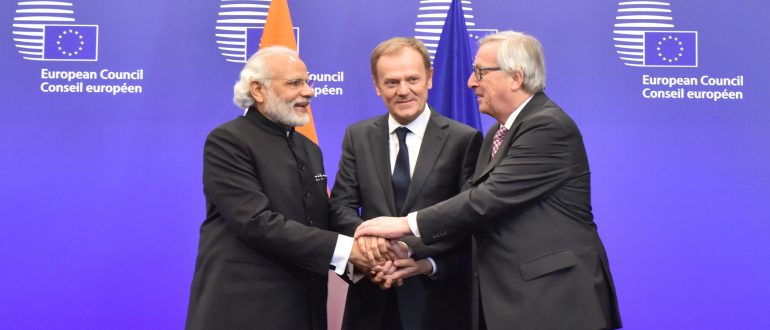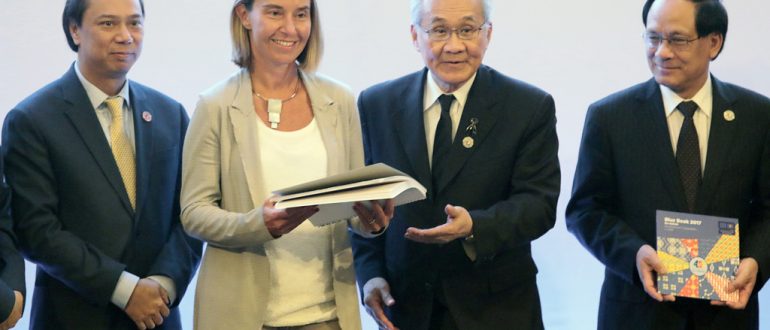The Dragon in Africa – Emerging Powers and Shifts in Development Aid
Does the advent of Emerging Powers change the landscape of development aid? A closer look on China’s role as aid donor sheds light onto a recent phenomenon of global interaction. This article briefly reviews the Western approach to development aid, presents a short discussion of recent contributions on the rise of Emerging Powers as donors in the realm of development assistance (with a particular focus on China in Africa) and finally asks for the implications of ongoing shifts in the realm of international development aid.
1. Development Aid: the Dominance of Western Donors
Development aid has been dominating North-South relations for the last 60 years, embedded in a discourse that has changed from one entrenched in Cold War logic where aid was explicitly designed for instrumental use (see Morgenthau 1962) to one focused on human development and capabilities (see Sen 1999). The main forum for the major donors of development aid has been the Development Assistance Committee (DAC) within the Organisation of Economic Cooperation and Development (OECD). Far from homogeneous, the Western donors roughly agree on the general framework of development assistance but pursue different strategies and emphasise varying aspects of cooperation. Initiatives such as the 2005 Paris Declaration have sought to streamline donor action but have yielded only mitigated results.
Instead of describing a geographical affiliation, the qualifier ‘Western’ in the general discourse on development rather implies the adherence of OECD donors to certain rationales, approaches and standards relevant for donor-recipient relations. Moynagh and Worsley (2008: 36) argue that a post-Washington Consensus is currently dominating the development discourse, refuting the plain neo-liberal approach of the Washington Consensus (dominant during the 1980s and 1990s with its core tenant of minimizing the role of government and expanding economic liberalization) and endorsing a more balanced state-market approach. Conditionality – the idea that aid is only given if recipients abide by certain rules – has been an integral part of Western approaches, exemplified by both the Washington Consensus with Structural Adjustment Programmes (SAPs) and the current focus on good governance.
However, the landscape of international aid has recently seen a development that might have a lasting impact on donor-recipient relations: Emerging Powers, led by China and India, have started to forge their profile as aid donors beyond the conventional DAC framework. As both cautious advocates (Sachs 2005, see also Easterly 2006) and fervent critics (Moyo 2008) of development aid acknowledge the wide-ranging impact aid has on recipient countries, a potential shift in donor-recipient relations will have important implications for the majority of countries in the world that all receive varying amounts of development aid.
2. The Dragon as a Rogue Donor? Emerging Powers and Development Aid
In his work on regional powers, Kappel defines what others call Emerging Powers as growing economies with the “capacity for regional and global action”, explicitly including the provision of development aid (Kappel 2011: 275). Accordingly, the BRICS – Brazil, Russia, India, China and South Africa – are all notorious examples. China, however, is by far the most prominent Emerging Power in the sphere of development assistance with – already in 2006 – an estimated annual financial assistance to Africa of around 19 billion USD (OECD 2010: 88). The current change in the development profile of emerging economies leads to the seemingly incoherent situation where countries such as China are listed on the DAC list of aid recipients (OECD 2011) while investing more and more money in their aid programmes towards other developing countries.
Particularly on the African continent, China has been at the forefront of institutionalizing relations with governments (see Taylor 2011) although other emerging economies like India follow straight (see Narlikar 2010). China and Africa have had a long history of engagement since the days of the early Cold War (Large 2008) and the recent rise in economic exchange and development programmes does not come out of the void (Brautigam 2009). The term ‘Beijing consensus’[1] intends to capture the specifically Chinese approach to development: In addition to being based on innovation and a step-by-step approach to political reform, its crucial feature is that states are supposed to “follow their own paths to development, free from outside intervention” (Moynagh and Worseley 2008: 37). Conditionalities that touch the domestic sphere of recipient countries – such as SAPs or good-governance constraints put forward by Western donors – are refuted[2]. This approach to aid has stimulated a range of critique from Western voices that see the already difficult fight for good governance in Africa undermined. In 2007 Mosés Naím publishes a trenchant critique of the Chinese take on development aid: without considerations for population or environment, Chinese aid programmes “stifle real progress while hurting average citizens” (Naím 2007). However, this appraisal is far from being unanimously shared: In her latest major contribution, The Dragon’s Gift (2009), Deborah Brautigam comes to a more nuanced assessment of China and its activities on the African continent.
Is China going its own way in doing development, putting forward the Beijing consensus – or does it incrementally start to replicate Western-dominated standards? In other words: Is China a norm-maker or a norm-taker? In order to find a preliminary answer to this question analysts have recently turned to Chinese engagement in particular policy sectors in Africa. Taking the example of the education sector, Nordtveit (2011: 107) shows that China’s aid programmes are evolving, at times contradictory and generally anxious to use a “distinctive vocabulary” separating their efforts from those of conventional donors. King (2010: 86) underlines the difficulty of comparing China’s stance on development aid to the Western approach with its specialized institutions and explicit sectoral strategies: “Ultimately all the many elements of China’s cooperation with Africa are inseparable from the political, economic and trade engagements with Africa“. More generally, Breslin (2011) argues that China presents an interesting alternative for African countries that have been largely dependent on Western economic partners. The fact that China explicitly refrains from attaching conditionalities to its aid programmes and – more effectively than Western donors – puts the idea of partnership in the centre of exchange is generally appreciated. China seems to use the South-South discourse in an effective way (see King 2009): the absence of an ambiguous colonial past allows China to focus on its strategic economic and – increasingly – also geopolitical interests[3]. From a global perspective, China’s (direct or indirect) influence will grow: according to a former senior manager in one of the World Bank’s trust programmes, the rise of China and other Emerging Powers will necessarily lead to a relative decline in Western agenda setting power in the development sector[4].
3. Emerging Powers and the Contingency of Development Aid Patterns
China’s approach to development cooperation has had its own features for a long time (Nordveit 2011) and is constantly evolving. To what extent China will eventually be leaning towards the role of norm-taker (gradually adjusting to Western standards of development aid) or the role of norm-maker (imposing its own way of doing development aid) has to be seen. Most current analyses (see Brautigam 2009, King 2010, Oya 2008) cautiously suggest the latter.
Balances are definitely shifting within donor-recipient relations. China and India are increasingly changing their profile in the landscape of international development aid and forge their profile as donors. This development will have serious implications for both the stance of Emerging Powers in the international landscape of development assistance (within and beyond the DAC) and domestic dynamics. The move from recipient to donor status can hardly be considered as completely unitary and coherent; disbursing growing amounts of development aid while parts of the population at home continue living in poverty bears questions as to political priorities in the development cycle.
To put things into perspective: The amounts of development aid disbursed by China (let alone other Emerging Powers) to developing countries are still dwarfed by the amounts Western donors give (OECD 2010). But Emerging Powers are on the rise, economically and also within the sphere of global governance and international politics. Conventional actors in the development sphere have started to realize that things are changing: The World Bank is very keen on cooperating with the Chinese government in development-related issues (China Daily 2011).
The ongoing changes in the landscape of international development aid do not seem to challenge the current paradigm of development per se: Officially, the Beijing consensus operates under similar conceptions of economic and human development as the Washington consensus and Western approaches more generally. However, the rise of Emerging Powers in the field of development aid point to global shifts that have only started to be recognized by a wider audience in OECD countries: the ‘Third World’, this anachronistic Cold War concept still widely used in both academia and the general public discourse[5], has become more fragmented than ever before. Categories of global interaction are changing and the sphere of international development aid provides an intriguing example for shifts of power and influence. Labels such as North-South relations are losing much of their analytic use for qualifying the core of international development cooperation. And even the idea of South-South relations seems to omit or downplay enormous and steadily growing differences in the global ‘south’.
Whether the growing importance of Emerging Powers and the looming competition between different types of donors will lead to more “policy space” (Oya 2008) for recipients remains to be seen. However, a shift is occurring. And no matter if one agrees that development aid has the potential for benefitting those in need (Sachs 2005) or that 60 years of development aid have been a complete disaster (Moyo 2008), one will probably agree that change in global power structures will lead – one way or the other – to change on the ground. If the perceived rise of new donors and new logics of development assistance provoked the Western development industry to reconsider its approaches and practices that have often led to inertia and pathology in the past, current shifts would speak for themselves. A look at China’s aid in Africa underlines the contingency of global arrangements. And beyond fear and uncertainty, as Hannah Arendt (1958) famously argues, contingency always carries a grain of hope.
Sebastian Haug
Sebastian is currently studying Global Governance and Diplomacy at the University of Oxford.
Bibliography:
Arendt, H., 1958. The Human Condition. Chicago: University of Chicago Press.
Brautigam, D., 2009. The Dragon’s Gift: The Real Story of China in Africa. Oxford: Oxford University Press.
Breslin, S., 2011. The Soft Notion of China’s ‘Soft Power’. Asia Programme Paper, March Issue, London: Chatham House.
China Daily 2011. World Bank, China to Cooperate in Job Creation, [online] last updated 27th May 2011. Available at: <http://www.chinadaily.com.cn/bizchina/2011-05/27/content_12592978.htm> [Accessed on 15.12.2011].
Easterly, W., 2006. The White Man’s Burden: Why the West’s Efforts to Aid the Rest Have Done So Much Ill and So Little Good, Oxford: Oxford University Press.
Escobar, A., 1995. Encountering Development: The Making and Unmaking of the Third World, Princeton: Princeton University Press.
Kappel, R., 2011. The Challenge to Europe: Regional Powers and the Shifting of the Global Order, Intereconomics, 46[5], pp. 275-286.
Kennedy, S., 2010. The Myth of the Beijing Consensus, Journal of Contemporary China, 19[65], pp. 461-477.
King, K., 2009. China’s Cooperation with Ethiopia: a comparative approach with a focus on human resources. In: Seminar on Sino-African Cooperation, 4 June 2009, University of Hong Kong (cited in Nordtveit 2011).
King, K., 2010. China’s Cooperation with Africa, and Especially South Africa, in Education and Training. A Special Relationship and a Different Approach to Aid?, Journal of International Cooperation in Education, 13[2], pp. 73-87.
Large, D., 2008. Beyond ‘Dragon in the Bush‘: The Study of China-Africa Relations, African Affairs, 10[426], pp. 45–61.
Morgenthau, H., 1962. A Political Theory of Foreign Aid, The American Political Science Review, 56[2], pp. 301-309.
Moynagh, M. and Worsley, R., 2008. Going Global: Key Questions of the Twenty-First Century. London: A&C Black.
Moyo, D., 2008. Dead Aid: Why Aid is Not Working and How There is Another Way for Africa. London: Allen Lane.
Naím, M., 2007. Rogue Aid, Foreign Policy, 01.03.2007.
Narlikar, A., 2010. India’s Rise to Power: Where Does East Africa Fit In?, Review of African Political Economy, 37[126], pp. 451-464.
Nordtveit, B., 2011. An Emerging Donor in Education and Development: A Case Study of China in Cameroon, International Journal of Educational Development, 31, pp. 99–108.
OECD 2010. Perspectives on Global Development 2010: Shifting Wealth. Paris: OECD.
OECD 2011. DAC List of ODA Recipients. [pdf] Available at: www.oecd.org/dafaoecd/9/50/48858205.pdf [Accessed on 15.12.2011].
Oya, C., 2008. Greater Africa-China Economic Cooperation: Will This Widen ‘Policy Space’?, Development Viewpoint, 4.
Sachs, J., 2005. The End of Poverty: Economic Possibilities for Our Times. London: Allen Lane.
Sen, A., 1999. Development as Freedom. Oxford: Oxford University Press.
Taylor, I., 2011. The Forum on China-Africa Cooperation (FOCAC). London: Routledge.



